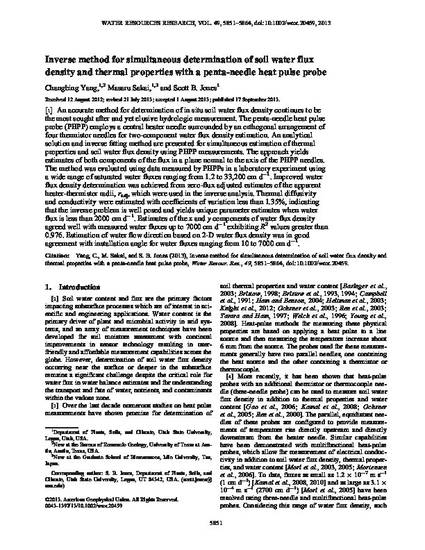
An accurate method for determination of in situ soil water flux density continues to be the most sought after and yet elusive hydrologic measurement. The penta-needle heat pulse probe (PHPP) employs a central heater needle surrounded by an orthogonal arrangement of four thermistor needles for two-component water flux density estimation. An analytical solution and inverse fitting method are presented for simultaneous estimation of thermal properties and soil water flux density using PHPP measurements. The approach yields estimates of both components of the flux in a plane normal to the axis of the PHPP needles. The method was evaluated using data measured by PHPPs in a laboratory experiment using a wide range of saturated water fluxes ranging from 1.2 to 33,200 cm d−1. Improved water flux density determination was achieved from zero-flux adjusted estimates of the apparent heater-thermistor radii, radj, which were used in the inverse analysis. Thermal diffusivity and conductivity were estimated with coefficients of variation less than 1.35%, indicating that the inverse problem is well posed and yields unique parameter estimates when water flux is less than 2000 cm d−1. Estimates of the x and y components of water flux density agreed well with measured water fluxes up to 7000 cm d−1 exhibiting R2 values greater than 0.976. Estimation of water flow direction based on 2-D water flux density was in good agreement with installation angle for water fluxes ranging from 10 to 7000 cm d−1.
